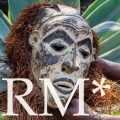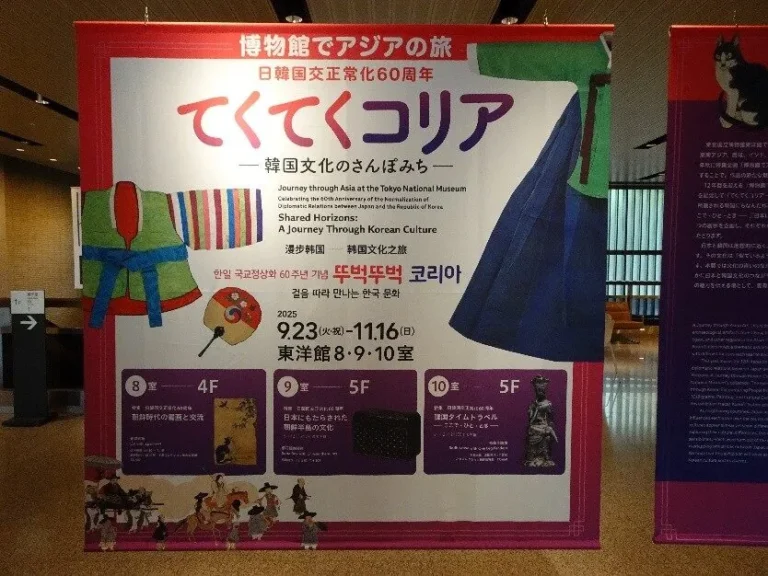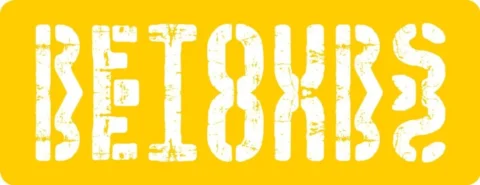In June and July 2025, the Overseas Korean Cultural Heritage Foundation (OKCHF) announced two restitutions of South Korea’s cultural properties from Japan:
- A one-story wooden building, Kangetsudō in Japanese and Gwanwoldang in Korean, which had been existing since the early 1930s in Kōtokuin, a Buddhist temple in Kamakura city in Kanagawa Prefecture. It is assumed that it was a shrine of a member of the royal family of the Joseon Dynasty (1392-1910). It was the first example of the restitution of a building from Japan to South Korea.
- Jūōzu, ‘paintings of ten deities’ who are in charge of the Hell, of the early Joseon Dynasty, and manuscripts of Avatamsaka Sutra, essential Buddhist scriptures, of the Koryo (Goryeo) Dynasty (918-1392). They are now in the National Palace Museum of Korea in Seoul. OKCHK obtained Jūōzu and manuscripts of Avatamsaka Sutra from a collector or an art dealer.
While South Korean mass media widely reported the two restitutions, major Japanese newspapers and TV-stations largely ignored them.
This scarce coverage was partly because neither the Japanese government, or a governmental institution, was involved in the process. It was the initiative of Takao Sato, chief priest of Kōtokuin temple and an archaeology professor at Keio University, that the restitution of Kannondō was materialized.
At the occasion, Takao Sato said, ‘It is a global trend to return cultural heritages that were taken from colonies during the era of imperialism.’ He proposed to donate a fund of about 100 million yen (about 600 thousand US dollars) to OKCHF to promote studies on cultural heritage.’
Claim concealed
Another indication of Japan’s turning a blind eye to its colonial past is the exhibition Shared Horizons: A journey through Korean Culture to commemorate the 60th anniversary of the diplomatic relations between Japan and South Korea in Tokyo National Museum (23 September – 16 November 2025). Around one-third of the over 250 shown objects are from the Ogura-collection. Takenosuke Ogura (1870-1964) was a successful entrepreneur, who made his fortune in colonial Korea and was a devoted collector of Korean archaeological and art objects.
The Ogura collection has been controversial and the South Korean side has repeatedly asked for its return. This fact is not mentioned at all in the exhibition.
This exhibition is far from the idea of decolonization. The past history of military invasions and colonization by Japan is not mentioned at all. It is not even said that Korea was a Japanese colony.
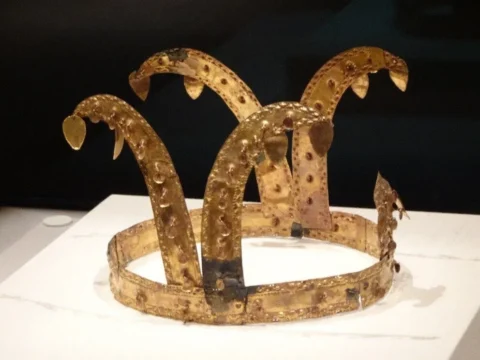
5th century golden crown
Ogura collection
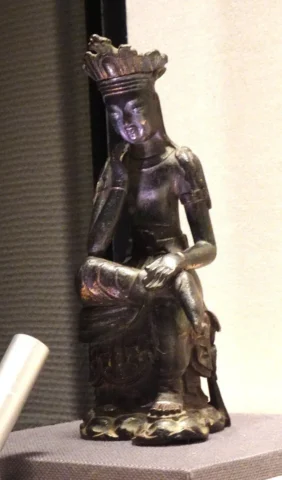 7th Century copper statue with gold plating of Bodhisattva
7th Century copper statue with gold plating of Bodhisattva
Ogura collection
A settled case?
In the late 1950s, Japan and South Korea began to work on the normalization of their diplomatic relations. In 1958, they set up a committee to deal with the issue of cultural properties. Its main topic was cultural cooperation but the issue of the restitution of looted cultural properties was never officially discussed.
As a result, a subsidiary treaty, ‘Agreement between the Government of Japan and the Government of the Republic of Korea concerning Cultural Cooperation’, was signed in 1965, but there was no mention about the restitution.
Instead, it was agreed that Japan would provide South Korea a fund of one billion US dollars in ten years. Based on these treaties, the successive governments of Japan have considered any restitution of cultural properties as well as compensation to ‘comfort women’ and ‘forced labourers’ impossible, as the cases had already been ‘settled’ in 1965.
South Korean understandings are entirely different. When the negotiation for the normalization of diplomatic relations started in 1952, the South Korean government had prepared a draft of eight-point right to claims, of which the restitution of looted cultural properties was at the top. But Japan did not agree with this.
The Centenary: A moment of reconciliation?
The year 2010 marked the centenary of the ‘annexation’ of Korea to the Japanese Empire. That year, the Japanese government took an unusual lead. In the summit meeting between the Japanese Prime Minister, Naoto Kan, and the South Korean President, Lee Myung-bak, the two agreed upon the restitution of 1,205 books to South Korea. (The Japanese government used the term ‘transfer’, not ‘restitution’).
This treasure was the property of the Imperial Household Agency, including 167 books of Uigwe, official records of rituals and ceremonies of the Joseon Dynasty. Most of them were donated to the Imperial Household in the early 1920s by the Japanese Governor-General’s Office of Korea. The collection of Uigwe had been inscribed in UNESCO’s Memory of the World International Register in 2007.
This significant move was made possible as the Japanese government at that time was under the liberal and centre-left Democratic Party, not the conservative Liberal Democratic Party (LDP). LDP called the transfer ‘careless concession’, and when LDP regained power at the national level in 2012, again on the side of the Japanese government the ‘settled case’ attitude became prevailed.
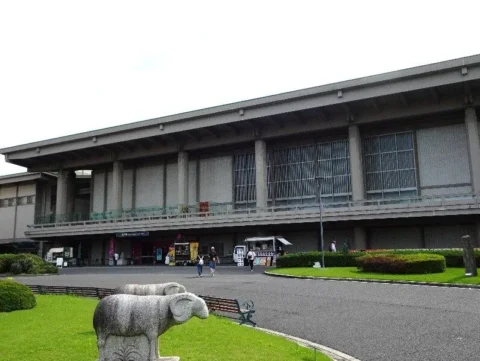
Asian Gallery of Tokyo National Museum
A rise in the interest in Japan
While the government of Japan maintained that restitution is a non-issue, a number of books have been published in Japan on this. In particular, Shin’ichi Arai’s Colonialism and Cultural Property: Thinking from Modern Japan and Korea (2012) needs to be remembered. Although its main focus is on the Japan- and Korea-case, his perspective is global. A pocket edition could reach the public.
Arai (Ϯ 2017) devoted his later years to enhance the public awareness of the restitution issue.
In 2010, when Japanese, Korean and Japanese-Korean scholars and activists set up a Liaison Committee on Lost Korean Cultural Properties in Japan, Arai took the position of representative. This Committee has been organising conferences and workshops, has a website and publishes annual reports since 2012.
Together with the South Korean OKCHF and the National Museum of Korea, the Committee planned the translation and publication of the revised version of Hwang Su-yong’s ‘Documentations of the Damages on Cultural Properties during the Japanese Imperial Era’, privately published in Korean in 1973. Hwang Su-yong (in Japanese, Kō Juei, 1918-2011) was Director of the National Museum of Korea and South Korea’s representative in the sub-committee on cultural properties between 1958 and 1965. The translation (Hwang 2015) was a significant step for the Japanese readers to understand the South Korean perspective.
The way forward
The way forward is not straight. Although we can observe the rise of public interest in Japan, many Japanese continue to have a negative attitude towards the restitution of cultural properties.
To make the situation worse, both in Japan and South Korea there has been growing hostile sentiment against the other. Public opinions in South Korea to support the compensation for ‘comfort women’ and ‘forced labourers’, and the issue of the disputed island in the Japan sea (in South Korea it is called the ‘Eastern sea’) play a role in enhancing the anti-South Korean sentiment.
A theft incident in 2012 also contributed to it. A group of South Korean thieves took two Buddhist statues and a set of scriptures of Korean origin from two Shintō shrines and a Buddhist temple in Tsushima Islands, located in-between Japan and South Korea. It was only in May 2025 that the case was finally resolved when the remaining statue was returned to Tsushima.
Dialogue and cooperation
From my informal discussions with colleagues in South Korea, it is clear that more dialogue and cooperation between researchers and civic groups of the two countries is required. Thorough, systematic and detailed provenance research is needed. As of January 1, 2025, OKCHF listed up 247,718 pieces of overseas cultural heritage, out of which 108,705 (about 44%) pieces are in Japan. The number even could be more, as there are a lot of cultural properties are in private collections.
Although OKCHF has been carrying out provenance research in Japan, with the help of Japanese researchers, it has covered only a small portion of cultural properties of Korean origin.
A full-scale cooperation and coordination on provenance research are recommendable, participated not only by individual researcher, but also by museums and universities. In fact, even after seven decades since the issue of restitution was raised as one of the diplomatic agendas, our knowledge about provenance is still very limited.
Joint provenance projects would certainly, I hope, cultivate trust and friendship between stakeholders of the two countries, and in the long-run it would lead us to a better solution.
Literature
Arai, Shin’ichi (2012) Koroniarizumu to bunkazai: Kindainippon to Chōsen kara kangaeru. [Colonialism and Cultural Property: Thinking from Modern Japan and Korea]. Tokyo: Iwanamishoten.
Hwang, Su-yong (ed.) (2015) Kankoku no ushinawareta bunkazai: zōho nitteiki bunkazai higaishiryō [The lost cultural properties: revised Documentations of the Damages on Cultural Properties during the Japanese Imperial Era]. Supervised by Shin’ichi Arai. Tokyo: San’ichishobō.
